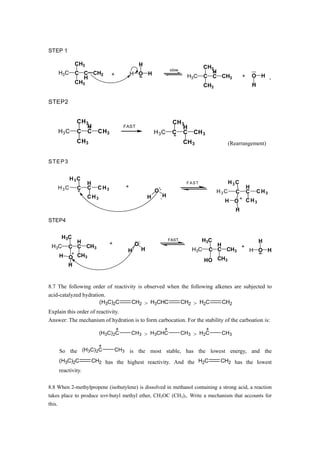The document provides mechanisms for several reactions involving addition of reagents such as hydrogen chloride, hydrogen bromide, and osmium tetroxide to various alkenes and alkynes. It also provides structures of products expected from these reactions.






![7,7-dibromobicyclo[4.1.0]heptane.
Answer:
KOC(CH3)3 Br
CHBr3 Br
8.14 Treating cyclohexene with 1,1-diiodoethane and a zinc-copper couple leads to two isomeric
products. What are their structures?
Answer:
I
+ Zn(Cu)
CH CH3
I
CH3 H3C
H H
8.15 Starting with an alkene, outline syntheses of each of the following:
CH3
OH
OH
(a) CH3
CH2CH3
OH
OH
(b) H
OH
H
OH
(c)](https://image.slidesharecdn.com/alkene-120616223526-phpapp02/85/Alkene-7-320.jpg)
























